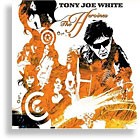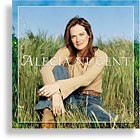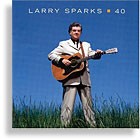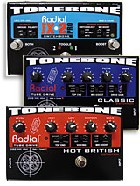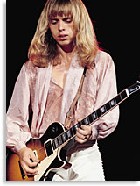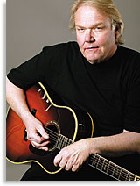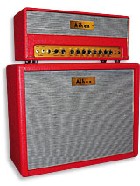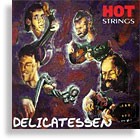“About 10 years ago, we stopped being a rock band,” Tommy Shaw opined from the stage. After a pregnant pause, the Styx guitarist/vocalist announced, “We’re a classic rock band!” To which the audience responded in noisy agreement.
The event was the January concert that premiered material from Styx’s new album, Cyclorama (Sanctuary). The day before that show, VG sat down over breakfast with Shaw, who we first interviewed in May/June ’99, to let the veteran rocker bring us up to date.
Vintage Guitar: Were you satisfied with the reception to your last solo album, 7 Deadly Zens?
Tommy Shaw: I don’t really look at sales, and making Styx albums is how I pay my insurance and other bills (chuckles)! I’ve got the best day job in the world, but when you do a solo album, you don’t have to ask anybody what they think, so it’s really a self-indulgent thing, like writing a lot of personal letters.
The fan response and the critical response was probably the best I’ve ever gotten on a solo record, so I couldn’t have been happier. And I’d love to do another one.
The same question could apply to how you felt about 1999’s Brave New World, the last Styx album recorded with Dennis DeYoung as a member.
Well, we were going through the worst struggles as a band we’d ever had. There was so much energy wasted on arguing, fighting, delaying, and manipulating that the music took a back seat. It got off to a great start, and we did the best we could, but it was done under a lot of duress and distraction.
I kind of look at that album like my What If album, except I was on drugs when I did What If, and we did Brave New World stone cold sober, and full of stupidity. It’s part of our history, and in that respect, it’s a valid record. But maybe it’s just as well it didn’t get much promotion; the record company was going through a change at that time. Then the band changed, and we got new members, and were able to go out and quietly start rebuilding the band in smaller markets.
When you look back, everything worked out the way it was supposed to – the record came out without much fanfare, and we ended up playing places we hadn’t played in years.
How many gigs did the band do with DeYoung to support Brave New World?
None. We did an appearance on the Children’s Miracle Network in June of ’99 before the record came out, and that was it. We had parted ways while we were still making the album.
What about the Damn Yankees?
We never broke up. We went back to our days jobs – Ted [Nugent] is president of Ted Nugent, Inc., Jack [Blades] is with Night Ranger, and Michael Cartellone now plays drums with Skynyrd, and those are all full-time jobs. What made Damn Yankees possible was that none of us had anything on the calendar. Making an album and doing a tour takes at least a year, and if you have any success, then you tour for another year. It would be hard for us to find the kind of time we would all need to do Damn Yankees, because we would all need to be there to interact.
How did Styx end up with Canadian singer Lawrence Gowan as the new keyboardist/vocalist?
He had a French album with just him on the piano, and had a hit up there called “A Criminal Mind.” He opened for us in Montreal in ’96, and brought the house down. I’d heard of him before, and I went on the internet to check out his music.
Then in ’99, I didn’t know where to begin replacing Dennis DeYoung. Those were big shoes to fill. I called (Journey keyboardist) Jonathan Cain, and asked him how to go about doing it, and he said “You have to do something now.” We started talking to people and listening; we found a couple of singers who sounded exactly like Dennis, and that was strange; J.Y. (James Young) and I didn’t think it was right to have someone who sounded like he was imitating Dennis.
Then, Kim Ouelette, who runs my website, suggested Gowan. I thought it was a great idea because his music came from the same place our early music came from. It could have been on Crystal Ball or Pieces of Eight.
One thing led to another, and he auditioned at my house in front of band members and our manager. He probably felt like he was walking into a lion’s den, but he played “A Criminal Mind” on the piano in my studio, and it was brilliant. I don’t even remember what other songs he did, and it didn’t matter (chuckles). That was the beginning of an amazing relationship.
He’s a Scot, and has that melancholy Scottish storytelling thing where he mixes these beautiful melodies with dark lyrics. It wasn’t romantic – and the romantic thing had been pretty much of a DeYoung thing with us.
[Gowan] does his own interpretations of our songs, and within the context of the band it’s easy to be comfortable hearing him. He’s got the same vocal range (as DeYoung), but he has his own style.
And the band toured with Gowan to support Brave New World, even though he’s not on it. How many gigs have you done with him in the band?
I think tomorrow night will make 436. We wanted to slowly introduce people to the new lineup and let them get comfortable with how we sound, [which is] more like Styx from the ’70s – Equinox, Crystal Ball, The Grand Illusion, Pieces of Eight. It was on Paradise Theater and Cornerstone where we started to make a turn, and when that happened I think we sort of lost the heart and soul of the band. So we kind of did an edit back to the earlier times.
But if you’re in a band and you play a lot of shows, you’d better be getting better, otherwise you’re dead in the water. Right now, we’re changing a lot of the arrangements of the classic songs; we just put a new ending on “Too Much Time.”
You had great tone on that tour, but there weren’t any amps visible…
Mesa-Boogie is the beef, and I just got one of their new power amps, a 2:One Hundred. The old one was good, but this one is better. I run through some vintage Marshall cabs. I just recently added a Leslie – Peter Frampton turned us on to the specs. So I’m using the same setup, but it’s updated.
You opened the show with a white Gibson ES-335, and subsequently used a Tele, Les Pauls, a PRS, and even a big orange Gretsch.
I’m like a little kid about it; I want to play a different guitar on every song! I just got this ’62 Les Paul Custom with an ebony fretboard, three pickups, and the sideways vibrato. And I’m dyin’ to play it! I was playing 17 guitars on our last tour, and because of the way we’re going to do our new set, we’ve got this nine-minute medley in the middle. I’ve added new guitars, but now we’ve got less songs for me to change guitars (laughs)!
Talk about the benefit shows you’ve done with other veteran performers since 9/11. There were the “Volunteers for America” shows in 2001, then a couple of others in October of 2002. Reportedly you were one of the progenitors of the efforts.
I made the first phone calls; I called (REO Speedwagon singer) Kevin Cronin, and he said, “I’m in.” So with Styx and REO, there was a show already. I started calling everybody else, and everybody I called put their own people to work on it, so it mushroomed, which was great. That’s the kind of friends we have.
We put the first shows together quickly and didn’t have enough time to research the name. It turned out there was another charity called Volunteers for America, and they were kind enough to let us slide. It was to raise money for the New York Port Authority Police Department Survivors’ Fund. They lost 37 people and didn’t get a lot of publicity. It hit home when I met some of the officers, and one of them gave me his card, where he’d scratched off the phone numbers of the offices in World Trade Center.
The 2002 shows were called “Rock to the Rescue,” and so far we’ve raised about $800,000 for them.
There’s no title track on Cyclorama, but a cyclorama is a circular painting where the picture was continuous…
It was the virtual reality of the 19th century. But there’s no literal meaning to the title or the cover. It’s more metaphoric, and meant to be thought-provoking. We attach a lot of meanings to it ourselves, but we didn’t want to just put it out and say “Well, here’s Cyclorama.” We wanted it open to interpretation.
Could it allude to the fact you’ve got four singers, and everyone in the band is a songwriter?
It does now (laughs)! That’s what I love, because people are already telling us what it’s about! We’re splitting the songwriting credits; each song went through the Styx gauntlet and got hammered, kicked, and twisted, reexamined and reassembled. The idea was to make each song a Styx song. “One With Everything,” for example, had five fathers.
There’s an emphasis on harmony vocals throughout the album.
(grins) Yeah. We know who we are, so we just said, “Let’s try to be awesome at who we are.” No apologies. We did do some overblown arrangements because we have progressive roots, but we also went way out there and pushed the envelope with songs like “Kiss Your Ass Goodbye.” Then we went back and pushed it the other direction with an acoustic song like “Yes, I Can.”
“Do Things My Way” is a flat-out rocker that opens the album.
It was meant to be an opening song…
Is that some kind of news broadcast as it fades out?
That’s a Tibetan chant used for meditation. We used it in a very twisted way. To me, it’s kind of maniacal, and my wife says that’s what the inside of my head sounds like (laughs)! But it is part and parcel to the song.
Is that a Leslie or a Uni-Vibe at the end of “Fields of the Brave”?
It’s a Leslie.
What kind of effect is used on the intro to “One With Everything”?
I’ve got a little Vox ValveTronics amp, kind of like of like an AC-30. It’s my favorite toy in the studio right now, and I dialed in some flange.
“Yes, I Can” is an acoustic song, and there’s a mandolin on it. Your idea?
Yeah, that’s my 1915 Gibson, and it sounded so sweet. Glen (Burtnik) wrote that part; he’s a lefty, and the way the part is written, the fingering on the mandolin drove me nuts. Glen played some really sweet guitar parts on the album himself, like the cascading 12-string part on “Together.”
What about the wah guitar that opens that song?
A straight, old-fashioned Dunlop Cry Baby. I wrote that song out of my own insecurity. I wrote the riff on acoustic, then used a wah to try to make it work. To me, a wah is a great little “cheat” thing. It can turn something simple into something with a groove. That’s how a lot of my stuff progresses – out of my own self-doubt. I add things to riffs to where I can get enough confidence, then if I step back and it sounds good, I keep going.
“Captain America” is a hard rock number with a guitar that has a high-tech vibrato.
That’s J.Y. He was Hendrix and I was Clapton on that (laughs)! I played the Les Paul through the wah, and J.Y. did the Hendrixy Strat.
“Genke De Ska” contains a review of other tracks and dialogue by people who want to be on the album.
The title is Japanese for “Are you healthy?” It’s part of a greeting, or a formal way of asking, “How are you doing?” We opened the album with a mantra, and we closed with a mantra-esque track.
Is Japan still a strong market for the band?
I think so. We’ve only been there once since we started back up in ’99, but Japan has a dear place in our hearts. We’re supposed to go back. We do have the history of “Mr. Roboto” too; there’s something about the Japanese language that works well in a rock track.
The cover art was created by Storm Thorgeson, who’s also done covers for Pink Floyd, the Alan Parsons Project, and Wishbone Ash, among others.
He also did the Pieces of Eight album cover, one of my favorite Styx covers of all time. The cover, like the title, is thought-provoking and the topic of a lot of discussion. And I love that. To me, we win if someone takes the time to ask “What does it mean?” We’ve made you stop for a second and contemplate.
What do you see in the future for your next solo album?
I’d like to do a little more diverse record, with some more traditional things and some covers, but still experimental. Dwight Yoakam and I sat down in Billy Bob Thornton’s studio a couple of weeks ago, which is a great musical place – it’s Slash’s old studio – and people like Robbie Robertson and Richard Perry came by, but nothing really came out of it.
Then there was just Dwight and me, and we started jamming. In about three hours, we did everything from Andy Williams songs to rock songs to country to church altar-call songs. He and I did “Wake Up, Little Susie” and it was so ****in’ great! I’ve already started building a track for that on Pro Tools. I haven’t asked Dwight to do it yet, but I’m gonna bug his ass. And I’ve already got a track built for Billy and me to do “Will The Circle Be Unbroken” that sounds killer.
It’ll probably be a very confusing album when it comes out! I love almost anything that’s roots-style, that comes from a great place but still has a pulse and emotion, so this next album will probably also sound rootsy.
You’ll turn 50 in September. Do you have any reason to think about slowing down?
I slowed down at one time, and aged tremendously during that period. The good thing about it was I was with my daughter when she was born, so I don’t regret that. But musically, it was very unfulfilling. I’m part of the short-attention-span generation; I’m happiest, and concentrate best, when I’m busy. I like that kind of insanity. Even my wife says that if I have time to think about something, I don’t do very well (chuckles). I like to keep my life at a hectic pace.
Photo: Neil Zlozower.
This article originally appeared in VG‘s July ’03 issue. All copyrights are by the author and Vintage Guitar magazine. Unauthorized replication or use is strictly prohibited.
